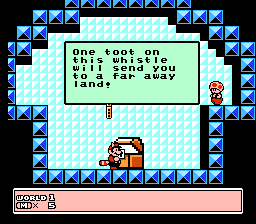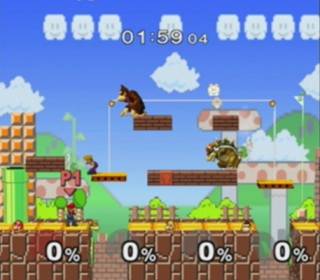Edit: I managed to get a more fleshed out version of this piece published on an academic site! If you want to read a more in-depth version of this essay then you can do so here http://www.firstpersonscholar.com/the-game-design-holy-grail/. I hit on a lot of the same points, but the essay is much more polished and quote-filled than my original version.
Two of my favorite pastimes are videogames and Magic the Gathering. I’ve been playing videogames since I was eight and I picked up MTG at the tender age of eleven. After over a decade of playing and loving MTG, I can firmly say that the world’s number one trading card game has had a profound effect on how I think about games and it has taught me a ton of valuable lessons about game design philosophy. There are a host of lessons and philosophies I could translate from MTG to videogames and back again; but, the philosophy that I find the most interesting at the moment is lenticular design.
Lenticular design is a game design philosophy that was coined by Mark Rosewater, the lead designer of MTG, to refer to Magic cards that “appear on their surface to be very simple, but once you understand more about how to use them, they become more complex.” Common wisdom would dictate that most, if not all, cards would become simpler when seen through experienced eyes since experienced players can shortcut a lot of things that new players have to deliberately think through. However, Rosewater found that this assumption did not hold true in practice. He pointed out, “some complexity is hidden, because it requires certain knowledge to even be aware of it.” For MTG cards, the type of complexity that is often hidden to new players on lenticular cards is strategic complexity. Rosewater writes that, “The real ghost of complexities for less-experienced players is strategic complexity. Because it requires a lot of knowledge to understand context, strategic complexity can take players quite a while to start seeing.” Thus, since new MTG players are often unaware of huge swath of cards and interactions, they are not burdened with some of the decisions that experienced players can easily see. For MTG, lenticular cards are sort of an accessibility and depth Holy Grail: they are cards whose complexity and depth scales with a player’s experience level. Consequently, lenticular cards appear accessible and simple to new players who need simplicity, and also offer complex choices to experienced players who crave depth, thereby fulfilling the desires of one group without trampling on the needs of the other. While I have never heard this design concept coined in a videogame context before (save for the last time I wrote about it), I do believe that there is a company that has mastered this form of design: Nintendo.

Nintendo is regarded by many as the Disney of videogames for plenty of reasons, from its family friendly image to its gaggle of reliable and constantly reused franchises. However, the biggest similarity that I see between the two companies is their ability to make content that simultaneously appeals to kids and adults. Disney maintains this balance through a mix of clever writing, music, and nostalgia, and Nintendo liberally skims from the same playbook. While it is easy to fall into the trap of dismissing Nintendo’s success as purely the result of pandering to nostalgic fans, Nintendo’s core design philosophies are as responsible for its fan acquisition and retention as its mustachioed superstar and his green dinosaur. I believe that one of the secrets to Nintendo’s masterful blend of accessibility and depth is its de facto use of lenticular design. Though I doubt that many Nintendo developers are familiar with this heretofore MTG specific design concept, many of Nintendo’s core franchises have mechanics and ideas that make a lot of sense when viewed through the lens of lenticular design. From Mario to Kirby to Super Smash Brothers to Captain Toad, each of these franchises makes tremendous use of lenticular design to keep themselves accessible to newcomers and engaging to experienced players.

One of the key factors to using lenticular design is hiding complexity in organic ways rather than artificial restraints. So, gating complex abilities or levels behind constructs like leveling systems or story progression is not lenticular design. In keeping with the principles I’ve described, Nintendo tends to be a bit subtler when it hides complexity. For example, Nintendo platformers utilize features like hidden level exits to hide complex mechanical interactions or unintuitive level design from new players. For a new player, the main objective of almost any level in a Nintendo platformer is to run to the right until she/he reaches an exit. It is entirely possible to beat a Mario or Kirby game by sticking to the main path, and there is no penalty for missing any secret content. Instead, there is a bonus reward for players that are clever enough to perceive the secrets hidden in plain sight in Mario and Kirby levels. A new player often has little ability to recognize potential hidden exits or secret rooms. Yet, those rooms constantly lurk in unexplored pipes, behind breakable blocks, and high in the clouds. Nintendo brilliantly allows experienced players to immediately pursue the increased challenge of finding every Warp Whistle and Secret Switch, without beating new players over the head with the fact that there are challenges they cannot yet overcome. Rather than forcing every player down one difficult and confusing path, Nintendo platformers hide many of their best challenges far enough away from the main path that players (that do not use FAQs) naturally stumble across them as they replay old games and improve their skills. As a result, when a new Mario game comes out, experienced players know to be on the lookout for secret exits and other obscure content, while new players enjoy a platformer that is challenging but not daunting. Mario games are beloved by people of all ages and experience levels because their complexity and difficulty scale with the player to a certain degree, no difficulty slider required.
Secret exits and hidden switches are a subtle way that Nintendo platformers hide complexity, but there is also a more direct complexity masker in Nintendo’s game development arsenal: the collectable. It’s important to mention that I am not talking about the average, everyday coins that fill many Nintendo games. Ordinary coins act as shiny bread crumbs that guide players through Nintendo platformers and action games. When I talk about collectables in this case I am talking about the big coins, flowers, and gems that populate games like New Super Mario Bros, Yoshi’s Island, and Captain Toad. Since the SNES era, the Mario series has employed special collectables that are hidden in the margins of every level, rather than on the critical path. These special collectables are often hidden behind the types of tricky jumps, warp pipes, and secret triggers that a new player might not even recognize. While big coins and gems are often simple to find in the first few levels of every Nintendo platformer, they quickly become harder and harder to find until collecting them is a hefty challenge. The developers give new players a quick taste of collecting these bonus items before ratcheting up the difficulty of attaining these digital trinkets. Furthermore, these games clearly demark how many collectables exist in each level so that every player knows how many secret collectables they may have missed. By including secret collectables, the developers of these games effectively add an additional level of depth and challenge to them without hugely impacting the experience of new players. A new player can focus entirely on getting to the end of levels without interacting with collectables at all. Every found collectable is a reward or a bonus for a new player, rather than something to actively seek out. However, for an experienced player the main challenge in a Mario or Captain Toad game is collecting all of the hidden stuff; beating the level and collecting stars is a matter of course. Consequently, experienced players and new players actually play quite different games when they approach a Nintendo game with special collectables. A new player plays a straightforward platformer that is about getting from the start to the finish of every level necessary to reach the final boss. Experienced players play a game full of exploration and subtle cues, scouring for the treasures that fuel the game within the game.

Though I’ve focused primarily on platformers until now, Nintendo does not confine its use of lenticular design to one genre. Nintendo also utilizes lenticular design in its flagship fighting franchise, Super Smash Bros. Super Smash Bros. remains one of the most accessible fighting games on the market, and that is not due to a lack of complexity or exceptionally intuitive controls. Rather, Super Smash Bros. expertly employs lenticular design in its modes and mechanics. All of the Super Smash Bros. games are multiplayer, arena-based fighting games, and their primary mode of play in non-tournament situations is a four to eight player free-for-all. While the multiplayer aspects of the game lend some amount of chaos to the gameplay, the default mode of play when starting a multiplayer game furthers that chaos so that every player can have fun regardless of skill level. The game’s default item setting is to have all items turned on, and its default scoring setting is a three minute timed battle. Those settings allow for maximum randomness and maximum fun for a new player who has no idea what she/he is doing. Many of the items in Super Smash Bros. are incredibly strong and hit large areas of the screen, thereby allowing players to get kills and score points without playing especially well. Some of the most powerful items are also random in what they do. Things like assist trophies and pokeballs have random effects that are capable of racking up multiple kills all by themselves. These items allow new players to have fun and compete to some extent without understanding mechanics that experienced players focus on. Mechanics like edge guarding, recovering, spiking, and wave dashing are beyond most new players, but knowledge of that hidden complexity and depth does not give the average Super Smash Bros. player an insurmountable advantage in the default mode. The default scoring also helps hide complexity because timed scoring does not penalize players for dying, it rewards players for killing. New players can make mistakes and fail without being kicked out of the game for dying too many times. They can even get small victories on individual kills without the game devolving into pure randomness. Super Smash Bros. default mode rewards skillful play without horribly penalizing inexperience, especially when compared to other fighting games. While the game becomes a sort of fighting game jazz when played at a high level, it is still a ball of wonderful, fun chaos for new players, and that is thanks to its use of lenticular design.
Nintendo stands above all other studios when it comes to mass appeal. No other studio has as long a track record of satisfying adults and children alike, or of appealing to the newest of the new and the oldest of the old. This is the result of both outstanding design quality and an outstanding ability to teach new players. Nintendo is able to design games that have the tons of complexity and replay-ability without being daunting for new players. This accessibility is powered in part by Nintendo’s unknowing use of lenticular design. It turns out that the world’s most successful trading card game and some of the most beloved videogames of all time share some design secret sauce. It just so happens that this secret sauce changes its flavor depending on who tastes it.

Log in to comment